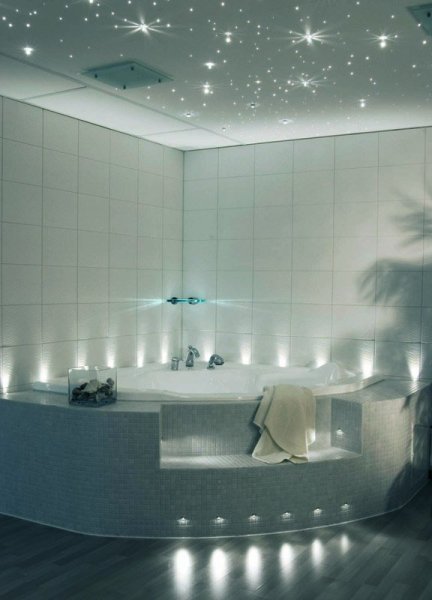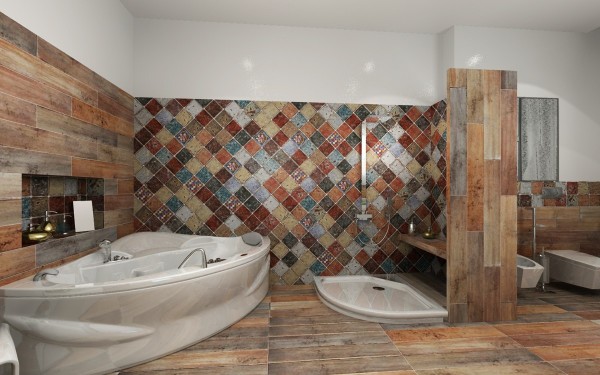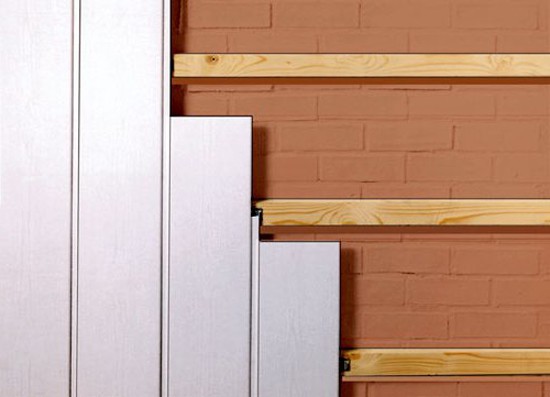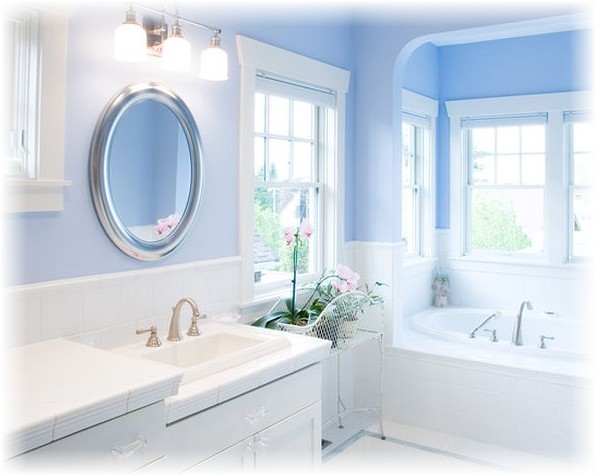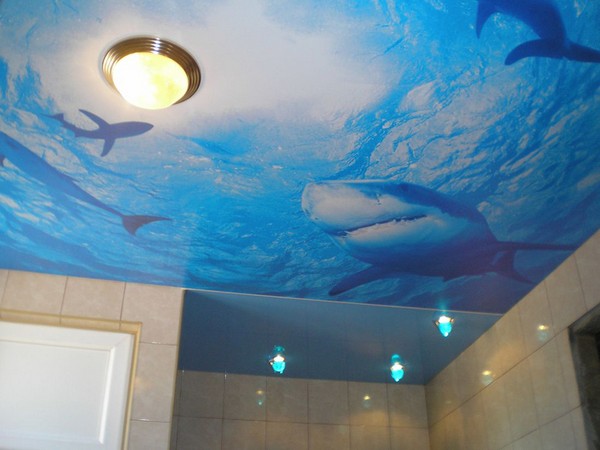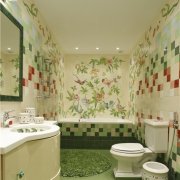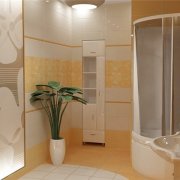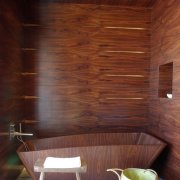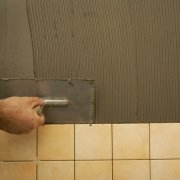How and how to finish the ceiling and walls in the bathroom
The walls and ceilings in the bathroom not only create the necessary interior in the room, but also make it cozy and safe for humans. Compared to other rooms, the bathroom is characterized by increased humidity and temperature fluctuations, which should be considered when choosing a material for its decoration. How to make a bathroom with your own hands will tell the article.
The content of the article
Room Features
The main features of the bathroom:
- Always high humidity.
- The presence of hot steam, especially during water procedures.
- Creation of prerequisites for the development of fungi, which is dangerous for humans.
This imposes requirements for finishing materials such as:
- Resistant to water and steam.
- Environmental safety for humans.
- Ease of purification from pollution.
- Have increased strength without breaking from mechanical stress.
- Prevent mold growth.
The most simple and affordable methods of wall decoration when using:
- Ceramic and porcelain tiles.
- Wall panels.
- Water resistant paint (see What paint to paint the bathroom: consider options).
- Mosaics.
How to use ceramic and porcelain tiles
The use of tiles in the decoration of the bathroom is one of the most popular ways, due to its operational properties:
- It perfectly withstands a long stay in a damp room.
- It does not give in to deformation at temperature differences.
- It is perfectly washed.
- Does not collect dust and dirt.
In addition, the tile has aesthetic advantages. At the same time, correctly selected and high-quality laid tiles create a unique design look for the room (see.How to do the installation of ceramic tiles on the wall with your own hands).
This can be done by:
- Choosing the right size, color and texture of the material.
- A different arrangement of tiles on the walls, which can be:
- in rows;
- "In a run";
- diagonally.
Tile Installation Instructions:
- Walls for laying are prepared:
- cleaning and priming for fairly smooth surfaces;
- stucco wall alignment, in the presence of sufficiently large defects;
- the best option for creating flat surfaces is covering them with cement slabs and gluing seams with fiberglass tape.
- Tiles are laid.
Tip: To maintain perfectly even marking lines, use a plumb line and a long level.
Tile laying procedure:
- After marking, the tile is glued. To more easily maintain the position of the tiles and the even distance between them, it is necessary to lay the tile in small areas, up to one square meter, with special tile glue.
- The construction level controls the position of the elements, which will allow timely correction of defects.
- The special composition overwrites the seams.
- The tile is washed.
Tip: The tile should be washed before the final curing of the grouting composition, otherwise there is a high probability of damage to the surface.
How to use wall panels in the bathroom
Wall panels made of plastic in the bathroom are distinguished by:
- High operational and esthetic qualities.
- Low price.
Technology of plating the bathroom with plastic:
- In order to make a quality bathroom, ceiling, walls, it is necessary to prepare.To do this, the remnants of the old cladding are removed. Old plaster is better to remove puncher. Further hiding the walls under the plastic eliminates the need for their alignment.
Tip: Due to the lack of access to surfaces after cladding, before installing plastic, all surfaces should be treated with an antifungal solution. This will prevent mold from appearing in the moist and warm space formed between the walls and the skin.
When laying plastic on the frame, you must:
- Assemble the frame from wooden blocks that are previously impregnated with a moisture barrier.
- On the frame elements are sewn plastic "lock" panels.
- In the places where wall panels adjoin the sides of the bathroom, the gap is filled with silicone and covered by a molding, which is designed specifically for PVC panels, which will protect against leakage.
Plastic panels - A great solution to finish ceilings, walls in a small bathroom. In such a ceiling you can integrate fixtures in the shape of a "fish eye" that fit perfectly into the design of any room.
How and how to paint the walls in the bathroom
Painting walls with waterproof paints is a fairly economical option used in decorating a bathroom. If desired, tile or mosaic can be further laid on such decorative finishes.
However, it should be borne in mind that only paint intended for rooms with high humidity should be used for decoration, which contains fungicides and algaecides - elements that prevent the development of fungi.
Wall painting technology:
Tip: In order for the paint to “lay down” evenly, the surfaces to be painted should be carefully prepared.
- Remains of the old coating are removed from the surface of the walls. The surface is thoroughly cleaned of dirt and oil stains.
- Walls are puttied “for painting”, special putty and are aligned so that the surface is as flat as possible. When using ordinary, but not structural paint, even the slightest putty defect after drying will begin to appear.
Features of wall decoration bathroom mosaic
The truly unique design of the bathroom, as seen in the photo, allows you to create a mosaic by applying all kinds of drawings and ornaments to the walls.
For laying material used:
- Glass of different colors.
- Multi-colored pottery.
- Artificial and natural stones.
- Smalt or opaque stained glass.
Tip: For a beginner, you should use a mosaic, which does not consist of individual parts, but mosaic sheets glued to the base of a polymer mesh. This will allow you to complete all the work without the involvement of specialists.
What materials for bathroom walls should not be used
There are a number of materials that should not be used for decoration in rooms with high humidity.
These include:
- Chalk whitewashing. In addition to the disadvantages inherent in ordinary whitewashing, chalk is an excellent environment where mold will multiply.
- Whitewashing with lime, in addition to the inconvenience when working with such material, the walls look quite boring.
- Wall decoration with enamel and oil paint. Such coatings will very quickly lose their attractiveness:
- surfaces turn yellow;
- cracking;
- crumble.
- No more than three months the wallpaper will last on the walls.
- Particleboard, fiberboard, drywall strongly absorb moisture, which over time will lead to deformation of the sheets.
Ways to decorate the ceiling in the bathroom
Ceiling in the bathroom can be done in many ways.
It can be:
- Latex or water dispersion paint. This type of decoration is preferred by the owners of the rooms, if you wish to maintain the height of the ceiling.
At the same time, coatings contain special additives with bactericidal characteristics, which prevents the appearance of fungus.
When painting:
- the surface is completely cleaned from the previous coating;
- special treatment is performed to prevent mold. In this case, you can use 9% vinegar;
- all cracks and crevices are sealed with mortar;
- the ceiling is leveled;
- the surface is peeled and primed;
- a certain shade of the ceiling can be given by adding color to the paint;
- it is better to paint the ceiling with a roller;
- after drying of the applied layer, the ceiling is painted again in the direction perpendicular to the previous one.
Tip: To level the ceiling, use a moisture-resistant putty before painting.
- Laying plates with polystyrene foam. The advantages of such a coating:
- money saving;
- short deadlines;
- minimal surface preparation of the base ceiling. It is enough to process the ceiling to protect it from mold;
- low cost;
- easy installation.
The tile is cleaned from the old coating and glued with special glue or liquid nails.
- Using plastic panels. This is a fairly simple process of finishing not only the ceiling, but also the walls of the bathroom. When decorating the ceiling:
- the level of its height is determined;
- the frame is made of dry timber treated with moisture impregnation or a galvanized profile;
- electrical wiring is performed and placed in the corrugated pipe;
- panels on the ceiling are mounted from the wall and fixed to the guide screws;
- panels are inserted sequentially into special grooves;
- openings for lighting devices are cut out in place.
Tip: To visually compensate for the height of the room, use PVC panels with a glossy surface.
- Tension systems on the ceiling for the bathroom. In this case, the following are optimally combined:
- the beauty;
- durability;
- practicality;
- ease of care;
- optimal cost.
But the main advantage is that the stretch ceiling is not afraid of flooding, it will just stretch, with proper installation of the structure.
- Cassette and rack ceilings. The most basic and crucial stage in the installation of the structure is the leveling of the frame, and the rails on special rails simply snap into place.
Cassette ceilings are:
- open, visible part of the frame plays the role of a decorative function;
- closed, the frame is hidden by metal cassettes.
Installation does not require the use of fasteners.
- SML - glass-magnetic sheet.
The advantages of the method:
- all the advantages of moisture-resistant GLA;
- increased strength;
- good flexibility;
- ease of handling.
The installation of LSU practically does not differ from the device of the drywall construction: from the construction of the frame, to puttying and painting. All methods of decorating the ceiling and walls of the bathroom can be seen in the video in this article.
